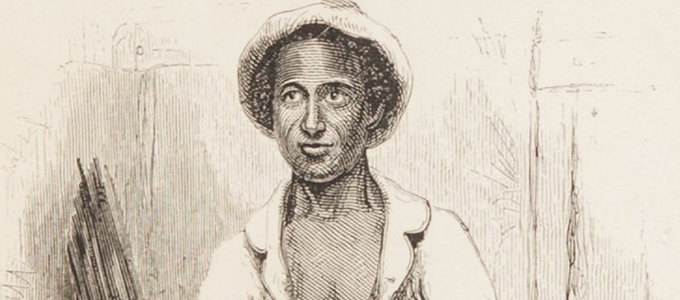And the Oscar goes to…Solomon Northup.
Who?
His is certainly not a household name in current American culture. In fact, Northup has never been a wildly popular or recognizable figure in American history outside a few years in his own time and with historians of slavery, abolition, and the period before, during, and after the American Civil War.
But his story is a fascinating one. Northup was born a free black man in Minerva, New York in July 1808. His father, Mintus, had been a slave for a family in Rhode Island and New York before being manumitted (an SAT word meaning “to be released from slavery”) upon his master’s death. Solomon grew up a free man, married a woman named Anne Hampton in 1829, worked a series of jobs, played his violin at various functions, then eventually bought a farm in Hebron, New York and settled down to raise three children with his wife.
Then, in 1841, the course of Solomon’s life would change forever when he was drugged, kidnapped, and sold into slavery in Washington, D. C., where he had gone with two men whom he thought to be circus entertainers, and for whom he was scheduled to play his violin at the circus. These men were not circus performers, but in fact, con artists who sold Solomon to a slave trader named James Birch, claiming he was a runaway slave from Georgia.
Eventually, Northup was forcibly transported to Birch’s partner in Louisiana, where he spent the next twelve years as a slave on various plantations. Here, Northup suffered the typical life of an enslaved man: beatings, torture, attempts on his life, and generally demeaning and dehumanizing treatment.
The process of freeing Solomon Northup was arduous, and somewhat dangerous for Solomon, as it turns out (the master who was forced to give up ownership of Solomon stated that had he known he was going to have to give up the slave, he would have killed the man before such a thing could happen). In any case, twelve years after he was kidnapped and forced to live as a slave, Solomon Northup was freed on January 4, 1853. He returned to his family in New York, where he would launch a few failed attempts to sue those involved in his capture, then move on to speak for abolitionist causes, work as a carpenter, and then seemingly disappear from the public record. Northup’s final years are shrouded in mystery; some think he was kidnapped again and lived out the remainder of his life as a slave, and some think he simply faded away and died of natural causes.
Then, in late 1852, Northup was able to use sympathetic contacts he’d made in Louisiana to get the news of his capture, almost twelve years earlier, to the son of his father’s former master, also named Henry Northup. Upon hearing the news, Northup contacted the governor of New York, Washington Hunt, who opened a case using New York’s 1840 law protecting its citizens from being kidnapped into slavery to help find and release Northup.
Now, what I have provided above is a sadly incomplete summary of the Northup affair. If you would like to read more of the story, you should pick up Northup’s autobiography, Twelve Years a Slave. It is the book upon which the 2013 film was made, the same film that just won Best Picture at the 2014 Academy Awards.
If you want a first edition of the book, we just so happen to have one in our April 2 Rare Books Auction in New York . It’s not a particularly valuable book. We expect our first edition to sell somewhere between $500 and $1000.
Now, to some that is prohibitive, but it does go to prove that a collector of good and interesting material doesn’t have to spend five figures to enjoy a piece of history. I just encourage anyone who feels interested enough to dig deeper into the story than could possibly fit into 133 minutes of screen time, even though that turned out to be 133 minutes of Oscar gold.\
By Joe Fay
